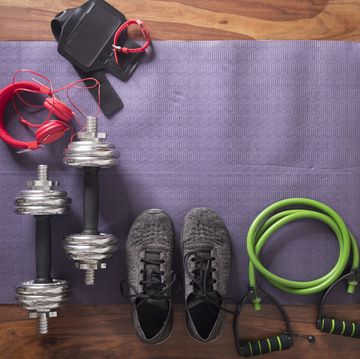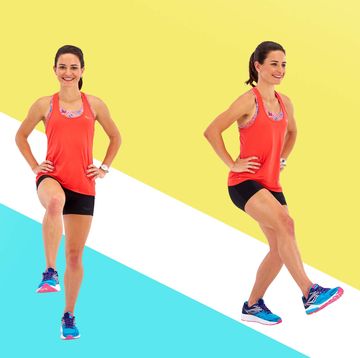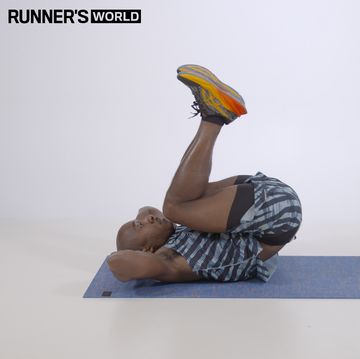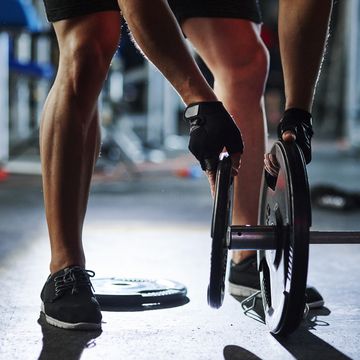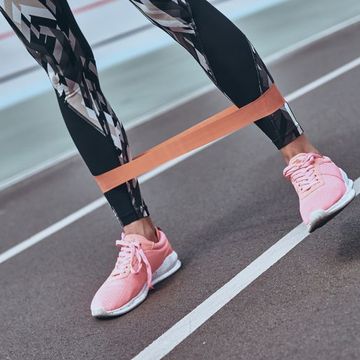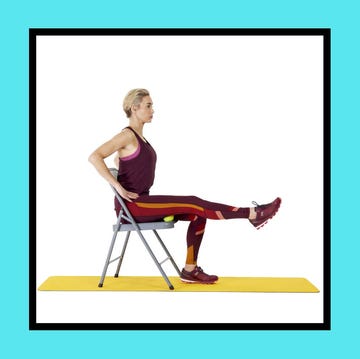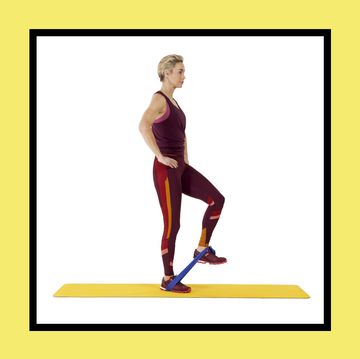Over the last decade, CrossFit has grown into one of the hottest fitness trends in the world, with over 14,000 CrossFit gyms – known as ‘boxes’ – springing up across the globe. Its many passionate devotees argue that no other workout approach builds as much functional all-round fitness. As a runner, you might be inclined to view CrossFit’s terminology and quirkily named workouts (more on those later) with suspicion, or think it mainly appeals to hardcore gym-goers. But introducing some CrossFit workouts into your routine offers tangible benefits, as, at its core, it’s an excellent – albeit challenging – form of cross-training. Read on for how you can try some of its key workouts without having to step inside a box.
What is CrossFit?
It’s an approach that combines high-intensity intervals, strength training, plyometrics, Olympic power-style weightlifting, gymnastics and endurance exercise.
Can CrossFit help with running?
CrossFit improves power, strength, endurance, speed, balance and coordination – all qualities central to good running performance. Most CrossFit workouts target the entire body rather than a single muscle group, meaning you’ll increase your overall muscular strength, improving running form and efficiency.
For a study published in the International Journal of Sports Physiology and Performance, researchers divided into two groups 26 runners who ran more than 10 miles a week.
The first followed a ‘polarized’ weekly running-only plan for three months, comprised of two days of easy running, one day of short HIIT (high-intensity interval training) intervals, one day of longer HIIT intervals or a 15-40-minute progression run, and one long, easy run each week. The second group performed two days of threshold-to-high-intensity running, two days of CrossFit, and one day that included both a threshold/high intensity run and a CrossFit workout each week.
Both groups worked out for five days a week. At the end of the 12 weeks, the researchers found that both the running-only group and the CrossFitters improved their 5K time trials by about 1.5 minutes – 5.5 to 6.2 per cent faster.
The takeaway for runners is that mixing CrossFit into your running should still enable you to improve your times – certainly over shorter distances such as the 5K. Plus, you’ll gain all the benefits of strength training, including becoming more injury-resistant, and you will have more variety in your schedule.
How many days a week should you do CrossFit?
If you are fairly new to running and/or haven’t done any cross-training before, start with one CrossFit workout per week. You should think of it as a quality workout, like speedwork or a tempo run, so bookend it with easier runs or rest days. As you get stronger and fitter (after a couple of months, say), you could add a second workout per week. One of CrossFit’s benefits is that, although the workouts are challenging, they’re also time efficient, generally lasting from five to 25 minutes, so they’re easy to fit into your day.
Some key CrossFit terms
As well as creating its own culture, CrossFit has developed its own language. Here's how to speak CrossFit, even if you haven’t yet stepped in a box.
WOD: Stands for ‘workout of the day’.
AMRAP: ‘As many rounds as possible’. The goal is to complete a combination of moves as many times as you can within a set time.
EMOM: Stands for ‘every minute on the minute’. You start a specified number of reps and sets of exercises at the start of one minute, then rest for whatever time you have left until starting again at the beginning of the next minute.
For time (or rounds for time, RFT): The goal is to complete the prescribed amount of work as fast as possible, with the workout finishing when all the reps and rounds have been completed.
RX: Means doing the WOD with the movement, reps and weight as prescribed, without scaling any of those factors down (it’s the US term for a medical prescription).
WOD names: Many benchmark CrossFit WODs have women’s names (a few are detailed below). Apparently, this follows the meteorological convention of giving storms female names, as the workouts are meant to have the same shock effect as being hit by a hurricane – that should give you some warning of how challenging a benchmark CrossFit WOD can be.
What are good CrossFit workouts for runners?
There are hundreds of CrossFit WODs, all varying in intensity and the amount of required kit (from heavy barbells to rowing machines). The eight we have selected here involve relatively common moves that can be done with minimal equipment. (All you’ll need is a pull-up bar and some kettlebells.)
Focus on good form and reduce the prescribed time or number of reps if you’re struggling to complete the prescribed number, and build up over time. These are high-intensity workouts, so aim for 8 to 9 out of 10 for effort. Listen to your body and make sure you are comfortable completing the workouts before adding more into your schedule.
15-rep body-weight workout
A simple, no-kit, all-body workout that can easily be done at home:
- 15 body-weight (also known as ‘air’) squats
- 15 press-ups
- 15 sit-ups
- 15 alternating lunges
- Perform five rounds for time, maintaining good form
The Cindy WOD
Deceptively simple in appearance, this is a benchmark, calorie-torching workout involving three movements that target different muscle groups:
- 5 pull-ups
- 10 press-ups
- 15 body-weight squats
- Do AMRAP (as many rounds as possible) in 20 minutes
- Record the number of rounds you do so you can compare it with future efforts. If 20 minutes sounds too much, try it for five to 10 minutes when starting out
The Barbara WOD
Another CrossFit benchmark workout, this is a classic high-intensity interval training (HIIT) workout, except it includes various compound body-weight exercises instead of a typical cardio movement, such as running:
- 20 pull-ups
- 30 press-ups
- 40 sit-ups
- 50 body-weight squats
- Rest for three minutes and repeat for five rounds for time
The Helen WOD
This is a good combination of running cardio and core-strength work:
- 400m run
- 21 kettlebell swings
- 12 pull-ups
- Repeat for a total of three rounds for time
Leg day WOD
This workout is focused squarely on the lower body – expect jelly legs by the end of it:
- 20 body-weight squats
- 20 alternating lunges
- 20 alternating split-squat jumps
- 10 squat jumps
- Repeat for a total of five rounds for time
Lunge-press-plank AMRAP
Works the legs, core and upper body. Do as many rounds as possible (AMRAP) of the following in 20 minutes:
- 20 walking lunges
- 15 press-ups
- 30-second plank
- If you need to rest, do so for only one minute at a time. If you want the routine to be more challenging, you can hold dumbbells at your sides during the walking lunges
One-mile squat WOD
This is a good benchmark workout to gauge your fitness as time progresses, and also trains you to run on tired legs, which is useful for emulating late-race fatigue:
- Run one mile, but do 50 squats at each 400m mark
- Record your time and try to beat it next time
Like this article? Sign up to our newsletter to get more articles like this delivered straight to your inbox.
Love what you’re reading? Enjoy Runner’s World magazine delivered straight to your door every month with free UK delivery. Buy direct for the lowest price and never miss an issue!




